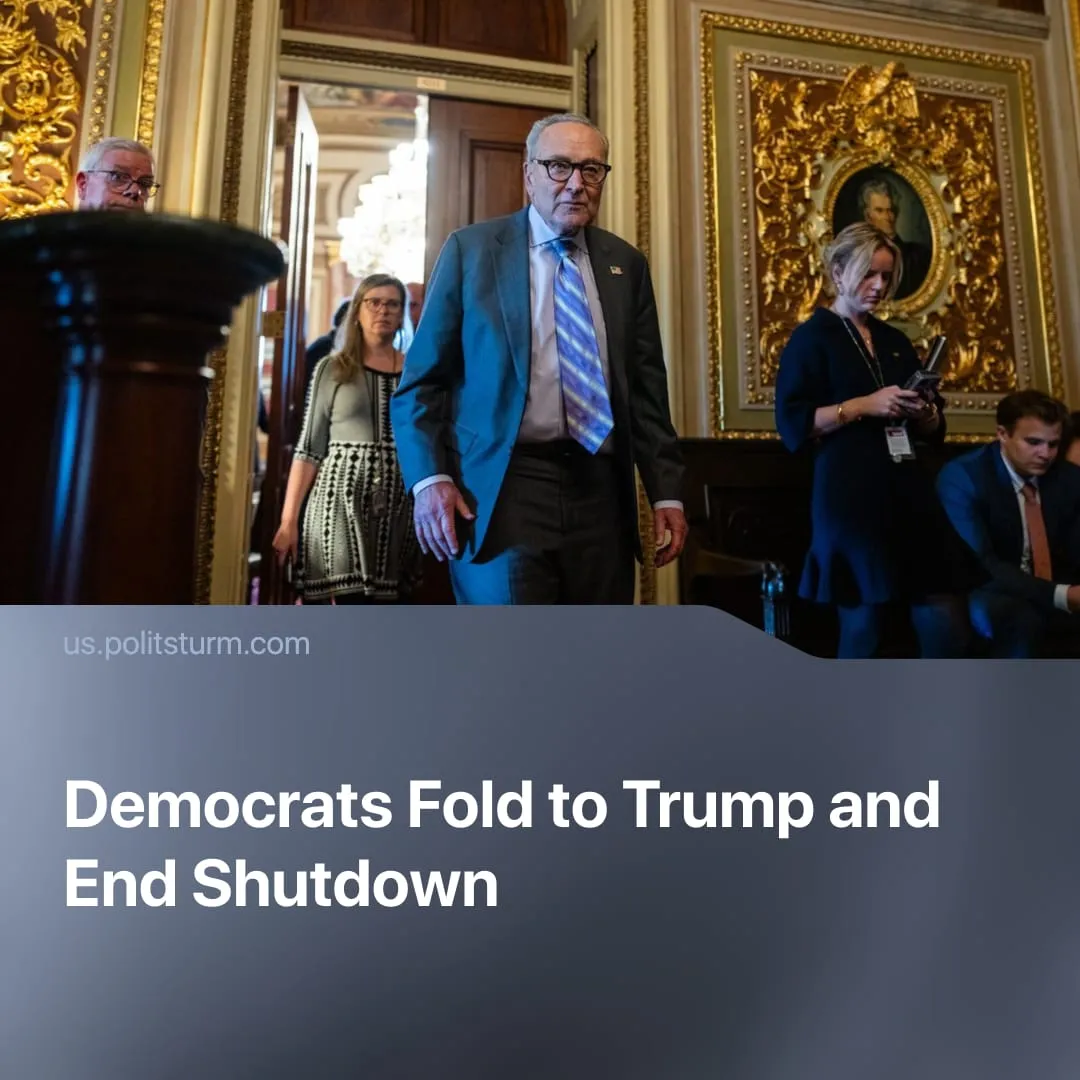Democrats folded to Trump’s spending bill, ending the longest US government shutdown, and failed to posture as “defenders of healthcare.”
Details. On 9 November, eight Democratic senators agreed to support the Republican government-spending bill. Trump signed it on 12 November, ending the 43-day shutdown – the longest in US history.
► Republicans hailed the end of the shutdown as a victory, claiming that the Democrats had given in under pressure. Trump signed the bill, stating that the federal government would now “resume normal operations” and condemning the shutdown itself as an inappropriate way of “running a country.”
► Some Democrats admitted that reopening was necessary, though they conceded on key demands. However, many in the party were furious, not expecting eight of their senators to defect. Most Democrats strongly criticised the defectors, viewing the deal as a political defeat.
► The new agreement provides government funding until 30 January 2026, with some agencies receiving their full annual budget. It includes back pay for federal workers, protection from layoffs, and increased spending on security and infrastructure. However, it does not include an immediate extension of federal health-insurance subsidies; the decision on whether to extend them will be made in a vote in December.
Context. The shutdown began when Congress failed to pass a funding bill, resulting in the suspension of many government services. Democrats blocked the Republican spending bill, insisting that Affordable Care Act (ACA) subsidies be extended and that Medicaid be protected.
► The shutdown disrupted communities across the country, with almost half of Americans reporting delayed services and reduced paychecks. Around 700,000 federal employees were also affected, many left without pay or placed on unpaid leave, adding to anxiety and instability among workers.
► Democrats failed to posture as “defenders of healthcare” and did not gain public support during the shutdown. Polls showed two in three Americans view Democrats as out of touch (68%), while a majority feel the same about Republicans (61%). Slightly more Americans blamed Trump and Congressional Republicans (45%) than Democrats (33%) for the shutdown.
► Trump’s net approval fell 5.5 points during the shutdown to –13.0, with 42.1% approving and 55.1% disapproving, marking a low for his term. Neither party gained popularity as a result of the shutdown.


